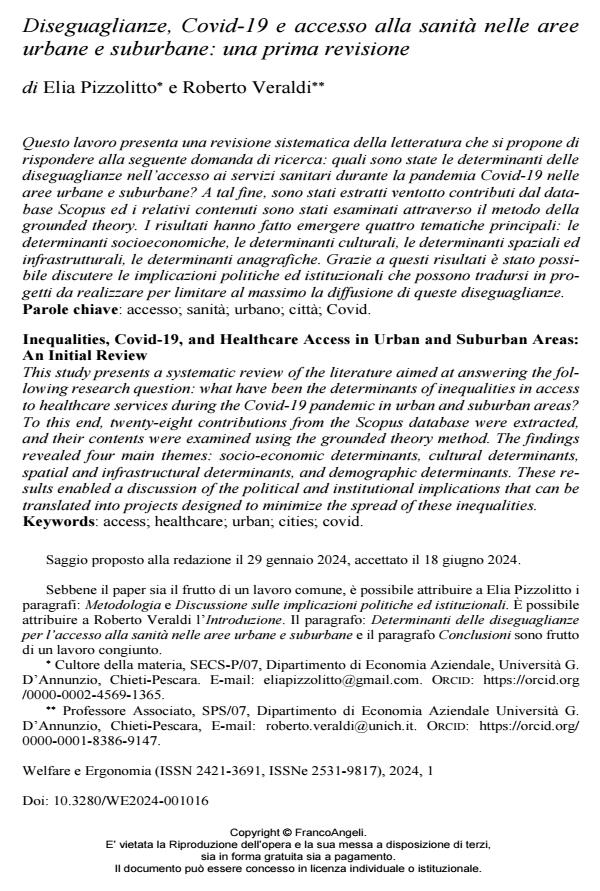Diseguaglianze, Covid-19 e accesso alla sanità nelle aree urbane e suburbane: una prima revisione
Titolo Rivista WELFARE E ERGONOMIA
Autori/Curatori Elia Pizzolitto, Roberto Veraldi
Anno di pubblicazione 2024 Fascicolo 2024/1
Lingua Italiano Numero pagine 14 P. 247-460 Dimensione file 262 KB
DOI 10.3280/WE2024-001016
Il DOI è il codice a barre della proprietà intellettuale: per saperne di più
clicca qui
Qui sotto puoi vedere in anteprima la prima pagina di questo articolo.
Se questo articolo ti interessa, lo puoi acquistare (e scaricare in formato pdf) seguendo le facili indicazioni per acquistare il download credit. Acquista Download Credits per scaricare questo Articolo in formato PDF

FrancoAngeli è membro della Publishers International Linking Association, Inc (PILA)associazione indipendente e non profit per facilitare (attraverso i servizi tecnologici implementati da CrossRef.org) l’accesso degli studiosi ai contenuti digitali nelle pubblicazioni professionali e scientifiche
Questo lavoro presenta una revisione sistematica della letteratura che si propone di rispondere alla seguente domanda di ricerca: quali sono state le determinanti delle diseguaglianze nell’accesso ai servizi sanitari durante la pandemia Covid-19 nelle aree urbane e suburbane? A tal fine, sono stati estratti ventotto contributi dal database Scopus ed i relativi contenuti sono stati esaminati attraverso il metodo della grounded theory. I risultati hanno fatto emergere quattro tematiche principali: le determinanti socioeconomiche, le determinanti culturali, le deter-minanti spaziali ed infrastrutturali, le determinanti anagrafiche. Grazie a questi risultati è stato possibile discutere le implicazioni politiche ed istituzionali che possono tradursi in progetti da realizzare per limitare al massimo la diffusione di queste diseguaglianze.
Parole chiave:accesso; sanità; urbano; città; Covid.
Elia Pizzolitto, Roberto Veraldi, Diseguaglianze, Covid-19 e accesso alla sanità nelle aree urbane e suburbane: una prima revisione in "WELFARE E ERGONOMIA" 1/2024, pp 247-460, DOI: 10.3280/WE2024-001016